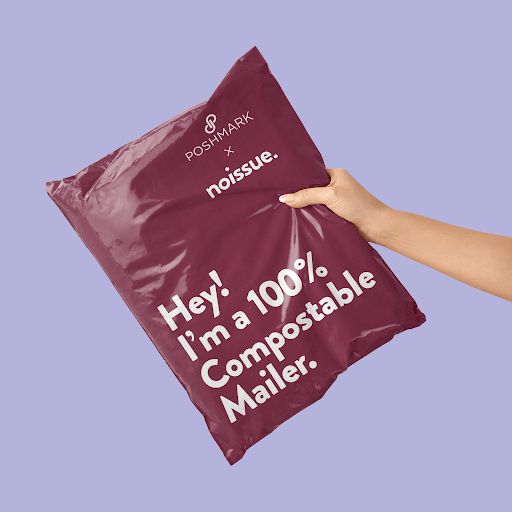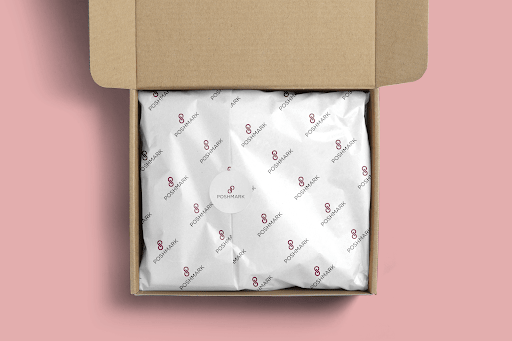You’ve likely heard the saying ‘one person’s trash is another person’s treasure.` But in 2019, this idea has taken on a much more tech-savvy approach.
Previously, unwanted items of clothing would simply stay in a dusty corner of the closet. But today, numerous people have created full-time businesses out of selling used clothes. How? Through the rapid growth of recommerce marketplaces.

What is ‘Recommerce?’
Recommerce, also known as Reverse Commerce, refers to consumers selling previously-owned or used products through online marketplaces. A good way to think about recommerce is as a virtual version of a neighborhood yard sale crossed with a hip vintage boutique. But those reselling online aren’t limited to finding customers locally. A buyer could be on the other side of the street – or the other side of the planet!
Not all that long ago, only large-ticket items like cars or houses had resale value. But through online selling sites, just about any product can be sold onto a willing buyer.
It’s an alternative form of consumption that competes with ‘upgrade culture’ or trend-based business models. This makes recommerce akin to the ‘waste not, want not’ attitudes of our grandparents’ generation, but with the powerful backing of eCommerce marketing. As a result, recommerce has arguably had the biggest impact on the fashion industry.

Recommerce and Fashion Reselling
Between 2000 and 2014, the number of garments purchased each year by the average consumer grew by 60%. So, it’s hardly surprising that more and more consumers are selling used clothes online.
In fact, statistics show that recommerce has been outperforming traditional retail for the past six years, with a forecast revenue of $20 billion for 2019. The largest sector by far is fashion reselling. So, how exactly are consumers reselling clothing? Traditionally, it’s brick and mortar thrift stores that have dominated the secondhand trade. But this is fast changing due to the convenience offered by online selling platforms.
According to The Shelf, recommerce marketplaces such as Poshmark, ThreadUP, The RealReal, and Depop can resell clothes online 20 times faster than regular retail can. This has contributed to the rapid rise in the number of consumers reselling online. In 2018, Poshmark alone made $150 million in revenue – up from just $50 million in 2016!
What is Behind the Rise of Fashion Reselling?

Recommerce as the Solution to Fast Fashion
All of us are familiar with the concept of ‘fast fashion’. It’s where clothing brands release ‘new collections’ on a rolling basis. To achieve this, garments need to be mass-produced and inexpensive for the consumer.
The result is that production and consumption cycles are getting faster. Where collections were once seasonal, they are now appearing at shorter and shorter intervals. According to McKinsey, the average number of clothing collections produced by a brand in the year 2000 was two. By 2011, this had grown to five. In 2019, it’s not unusual for new collections to arrive just four to six weeks apart.
This perpetuates a culture where fashion is seen as disposable. When a garment is no longer on trend, it’s not seen to have value. But it’s now widely known that fast fashion has dire consequences for the environment.
Worldwide, 85% of discarded clothes end up in the landfill. The chemicals from the dying process also leach out into the soil and waterways, resulting in widespread pollution.
Fashion reselling challenges fast fashion production by keeping garments in use for as long as possible. This creates a circular business model that offers a long-term solution to textile waste.
Online selling sites provide consumers with an alternative to throwing clothes away – one they can make money from. But this also has longer term consequences. As reselling things online becomes more widespread, it creates alternative criteria for what makes a product desirable.
For profitable fashion reselling to be possible, used clothing has to be able to handle numerous wears without breaking down. But fast fashion isn’t made with this longevity in mind. As a result, many brands will struggle to gain a presence in this new secondary market.
In the words of Andy Ruben, the CEO of Yerdle, “Brands need to commit to making the best most durable product in the first place. It is counter to fast fashion—if you’re fast fashion, you can’t do this business model.”
In fact, 40% of consumers now consider the so-called ‘resale’ value of an item before they purchase. Going forward, recommerce will make it much easier for long-lasting, sustainable fashion brands to thrive.

Millennials Love Buying & Reselling Things Online
According to ThreadUP’s 2019 Resale Report, millennials and Gen Z are driving much of the growth of online selling sites. They are adopting second hand clothing 2.5 times faster than other age groups!
Why? Because Gen Z and younger millennials came of age during or shortly after the recession. Out of necessity, they developed thriftier habits than their parents did at the same age. Conspicuous consumption is often frowned upon, while creative and careful consumption is praised.
Moreover, the younger generations are much more conscious of the environmental impact of fashion. According to eMarketer, 87% of millennial consumers in the US are willing to pay more for sustainable items.
Recommerce and reselling online has therefore become an activity with a lot of social currency. Trendwatching.com refers to this phenomenon as the ‘statusphere’, or ‘the growing status boost that comes from being savvy and shopping (environmentally) responsibly.’
In short, young consumers are getting their shopping fixes in a very different way from the past. It’s no longer about having the latest thing. ‘Cool’ means taking the time to hunt for secondhand treasures and slow down the fashion cycle.

Online Selling Sites Are Built Off ‘Social Selling’
Of course, choosing to sell old clothes online isn’t new. Many of us have sold garments through eBay at one point or another. But fashion reselling is a whole new ballgame in the age of social media and influencer marketing.
Platforms such as Instagram and Pinterest make it easy for brands and consumers alike to curate their very own fashion lookbooks – and clothing resellers have quickly followed suit.
This trend of ‘social selling’ has created a huge secondary market for sought-after brands and apparel. In recommerce, no resold garment is ever ‘unwanted’ – it’s an item with its own unique backstory.
In 2019, cohesive branding and curated product selections are key to successfully reselling online. Why? In the same way that consumers repeatedly purchase from certain brands, they are more likely to return to resellers whose aesthetic they admire. As a result, the top fashion resellers have become ‘influencers’ in their own right.
According to Tracey Sun, the co-founder of the fashion reselling platform Poshmark, influencers are integral to their marketing strategy: “Our approach to influencers fundamentally hasn’t changed, we’ve just increased the volume. When they can authentically tell the story of why they are attracted to the platform, that resonates with our culture and our brand…They’ve also figured out that an item will sell faster if they tell a story around it, and they photograph themselves wearing it — that’s so much more authentic this day and age than showing it on a model nobody can relate to.”

Meet the Poshers
Anyone can take advantage of the growth of recommerce, but it takes considerable time and effort to turn fashion reselling into a profitable business. We speak to three Poshmark influencers who have done exactly that! We ask them about how they got into reselling online, what they think about reselling and sustainability, and their top tips for selling clothes on Poshmark!
Q: Why did you start fashion reselling, and why did you stick with it?
Jennifer (@abritishposher): “I started reselling just for fun, I was working a bartending job that I didn’t find much fulfillment in and was looking for a side hobby/hustle and happened to come across reselling. I was hooked very quickly as I started to see the profits adding up and have never looked back!”
Kaahreena Ochoco: “I actually started reselling in high school. My friends and I would ditch school and go thrifting! We made an Instagram page where we would post pics of the items we were selling, and then meet up with other girls at school or around town. I was the only one who stuck with it, and 6 years later I’m still doing it! I honestly just love reselling. All aspects of it are super fun for me and I love to thrift anyway, so might as well make some money doing it.”
Becky Park: “I started reselling on Poshmark simply to get rid of my own clothes as well as my husband’s clothes. When I saw that things were actually selling, I started doing more research as far as how I could be even more successful on the platform and found a wonderful community on YouTube and Instagram. Thanks to the helpful Poshmark tips and tricks other more seasoned resellers shared so freely, I had all the information I needed to continue growing my business!”

Q: How do you view sustainability through the lens of recommerce?
Jennifer (@abritishposher): “Sustainability is something I have learned more about in my journey as a reseller. It is becoming much more socially acceptable to purchase items second hand, and I love that reselling helps to bring awareness to that. Since I thrift almost everyday, it has really opened my eyes to the amount of clothing that is discarded on a regular basis! By reselling, I am able to rehome amazing items that would otherwise end up in landfills. This reduces textile waste, saves thousands of gallons of water and reduces textile pollution in the process.”
Kaahreena Ochoco: “As I became a mother, sustainability is something that has become more important to me. When resellers thrift for their inventory and resell it, they keep thousands and thousands of items out of the landfill. I know it only skims the surface to a bigger issue but as long as we do what we can, it will make an impact.”
Becky Park: “Reselling gives clothes that are destined for the landfill another chance to be loved and worn by another human being. Not only that, but I believe that reselling as well as companies like ThredUP and The RealReal have made wearing second hand clothes less taboo and, if anything, kind of cool! I believe it’s also sending a message to fashion labels and companies that their consumers want quality clothing rather than fast fashion. As people start to scale down on what they actually need to get by on a daily basis, they’re turning to platforms like Poshmark to find the fashion they want at a lower cost.”
Poshmark Tips & Tricks
So, what top fashion reselling tips do these veteran resellers have for us?

Research What is Likely to Sell Well
You can’t stick any old thing on a reselling site and expect it to fly off the shelf! Successful reselling involves careful strategizing about what is likely to sell at any given time.
For example, if you list a coat for sale during the warmer months, you are probably going to get less traction than if you tried selling it in the Fall. It’s really important that you consider your prospective buyer’s journey when choosing to sell clothes online.
According to Jennifer, keeping yourself in the loop on what is in demand is the key to being a successful reseller:
“Research is so key! It’s not a good enough strategy to buy items that you think will sell well based on your own fashion taste and opinion, you have to be able to critically evaluate each piece and use your best judgement to decide if this is an item someone else wants to buy and if it will be a profitable purchase for your business.”
For those who are new to reselling, Poshmark itself is a great source of information on what is giving resellers a great return!
“It’s important to research the marketplace to establish exactly what is in demand and what buyers are searching for to buy. All of the answers you need are within the Poshmark app. I look at sold listings to identify what is currently selling fast for a great price and actively seek out those items to resell in my closet.”

‘Cheap’ isn’t the Same as ‘Good Value’ in Recommerce
In general, fast fashion items have a low resale value. As we’ve mentioned, this is due to concerns about quality. But it’s also because there are a lot more listings than there is demand. Online selling platforms are flooded with listings from high-street brands. Selling this alone makes it very hard to stand out.
Moreover, this isn’t what many buyers on Poshmark are after. People want to be thrifty, but not cheap. They still want the excitement of buying unique, desirable items!
In Kaahreena’s experience many new fashion resellers, including herself, make the mistake of trying to sell whatever they can get ahold of cheaply, rather than considering a garment’s value in the eyes of buyers.
“When I was starting out, I feel like my profits and sales weren’t being maximized because I was just picking up anything I could find that was cheap and cute. It sounds tedious, but looking up comps and checking the market for over-saturation is SO important!”
Becky agrees. “Don’t just buy things because they’re cheap! Make sure there’s a market for the item!”

Your Poshmark Packaging – Think About Sustainability
Resellers on Poshmark aren’t just responsible for photographing garments and creating listings. They have to manage order fulfillment as well.
However, this area receives very little focus within ‘how to sell on Poshmark’ guides. It’s true that packaging and shipping orders is a lot less exciting than styling garments – but it’s also crucial to the success of your operation.
As we explored earlier, many buyers on Poshmark and other online selling sites are very conscious about sustainability. They want to feel that their decision to engage in recommerce makes a difference. This is seriously undermined if resellers use packaging which is harmful to the environment!
Our top Poshmark packaging tip? Eco-friendly retail packaging!
Adopting sustainable packaging is a clear sign to consumers that you care about your carbon footprint. Furthermore, it’s a unique selling point that appeals to conscious consumers!
Being a fashion reseller gives you a big advantage when it comes to eco packaging. Clothing apparel is soft, foldable, and cannot be damaged easily. That’s why we teamed up with Poshmark to help them create their very own branded compostable mailer bags for resellers!
Regular poly mailers cannot be recycled or reused, and so produce huge amounts of plastic waste. noissue mailers are 100% compostable, and biodegrade completely within a six-month period. They couldn’t be easier for fashion resellers to use; simply put your apparel inside, seal the edges down, and you are good to go!

If you really want to kick the customer experience up a notch, considering using some customized tissue paper to wrap your products in. This will give your profile as a reseller a much more premium edge. Why? Because it makes your customers feel as though you are dealing in high-end apparel, rather than ‘used’ goods!
But don’t just take our word for it! Here is the verdict from the Poshers:
Jennifer (@abritishposher): “It seemed hypocritical to me to help the planet by reselling, yet create so much plastic waste in my packaging and shipping supplies. I love that that since using the compostable mailers I am not only reducing textile waste, but also avoiding creating any additional waste as a byproduct of my business. Using the mailers has also helped to bring sustainability awareness to my customers and I think that even as a small business, the more we can set a good example the bigger impact we can have on social behavior change.”
Kaahreena Ochoco: “I’ve gotten so many compliments from buyers and from fellow resellers on the compostable mailers! Plus, using them made me realize how much waste resellers still do create in shipping supplies and other parts of our businesses. Using noissue mailers make me feel like I’m doing better on my part.”
Becky Park: “I have had multiple people leave glowing comments on my usage of compostable mailers. I’ve also had people reuse them to send out their own packages which I think is amazing! It’s helped me feel much better about my reselling business as a whole because one of the joys I get from reselling is knowing how many pounds of clothing I am saving from the landfill. Now, my conscience is much clearer knowing that I’m also keeping poly mailers out of landfills too!”
Recommerce and the rise of online selling sites is more than just a side-hustle or a way to get clothes at a good price. It’s an alternative approach to consumerism which is much healthier for the planet.
By promoting the inherent value of goods which already exist, we can develop a circular economy which produces far less waste overall. Fashion reselling also promotes creativity and sustainable habits beyond our choice of clothing – it also helps us to be much more mindful about our daily habits too!

